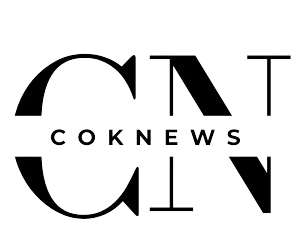Introduction
The field of rare disease research and treatment has seen significant advancements in recent years, yet it remains one of the most challenging areas in medicine. Rare diseases, often defined as conditions affecting fewer than 200,000 people in the U.S., collectively impact millions globally. Despite this, these conditions are often underdiagnosed, misunderstood, and underserved. The journey from identifying a rare disease to developing a viable treatment is fraught with hurdles, but innovative strategies are paving the way for progress.
Definition
Rare disease treatment refers to medical interventions aimed at managing or curing conditions that affect a small percentage of the population. These diseases, often referred to as orphan diseases, may require specialized therapies, often involving unique or innovative approaches due to their limited patient populations. Treatment strategies may include personalized medicine, targeted therapies, and clinical trials to address the specific needs of individuals living with rare diseases.
Understanding Rare Diseases: A Complex Landscape
Rare diseases encompass a wide array of conditions, including genetic disorders, cancers, autoimmune diseases, and infectious diseases. Their challenges are typically distinct, including:
- Diagnostic Complexity: Rare diseases frequently mimic more common conditions, leading to delays in accurate diagnosis. Patients may endure years of misdiagnoses before receiving the correct treatment.
- Limited Research: Many rare diseases are poorly understood, with minimal research funding and data available.
- Small Patient Populations: The rarity of these diseases means limited data pools for clinical studies, complicating research efforts and treatment validation.
Challenges in Rare Disease Treatment Development
Developing treatments for rare diseases is inherently difficult due to the following factors:
1. Economic Barriers:
The development of new therapies is expensive, and rare diseases often lack the financial incentives seen in more prevalent conditions. Pharmaceutical companies may hesitate to invest in treatments for small patient populations, fearing insufficient returns on investment.
2. Regulatory Challenges:
Obtaining approval for rare disease treatments requires rigorous clinical trials, which are difficult to conduct due to small and geographically dispersed patient groups.
3. Scientific Hurdles:
Rare diseases often stem from complex genetic or molecular mechanisms, requiring advanced technologies and innovative approaches for treatment development.
4. Patient Recruitment:
Clinical trials for rare diseases face unique recruitment challenges, as patients are often scattered across the globe and may not have easy access to trial sites.
Innovative Strategies for Overcoming Challenges
Despite these obstacles, stakeholders across the medical and scientific communities are implementing strategies to address the challenges of rare disease treatment development.
1. Advancing Precision Medicine:
Precision medicine tailors treatments to individual genetic profiles, offering promising solutions for rare diseases. By leveraging genomic sequencing and molecular diagnostics, researchers can identify precise therapeutic targets, leading to more effective treatments.
2. Incentivizing Drug Development:
Regulatory agencies, such as the U.S. Food and Drug Administration (FDA) and the European Medicines Agency (EMA), have introduced orphan drug designation programs. These initiatives provide incentives like tax credits, grant funding, and market exclusivity to encourage pharmaceutical companies to invest in rare disease research.
3. Collaborative Research Models:
Partnerships between academic institutions, biotechnology companies, and patient advocacy groups are fostering innovation. Collaborative networks enable data sharing, resource pooling, and accelerated research timelines.
- Case Study: The International Rare Diseases Research Consortium (IRDiRC) is a global initiative uniting researchers and organizations to advance rare disease treatments and diagnostics.
4. Utilizing Real-World Data:
Real-world evidence (RWE) collected from patient registries, electronic health records, and wearable devices is becoming a valuable tool in rare disease research. This data helps bridge gaps in clinical trial information and supports regulatory decision-making.
Breakthrough Technologies in Rare Disease Research
The integration of cutting-edge technologies is revolutionizing rare disease treatment development:
1. Gene Therapy:
Gene therapy offers potential cures by addressing the root cause of genetic disorders. Techniques like CRISPR-Cas9 are enabling precise genome editing, offering hope for conditions like Duchenne muscular dystrophy and sickle cell anemia.
2. Artificial Intelligence (AI):
AI is accelerating drug discovery and diagnostics by analyzing vast datasets to identify patterns and potential drug candidates. Machine learning algorithms are particularly useful for uncovering biomarkers and predicting treatment outcomes.
3. Biologics and RNA-Based Therapies:
Innovations in biologics, such as monoclonal antibodies, and RNA-based therapies, including siRNA and mRNA, are expanding the treatment options for rare diseases.
4. 3D Modeling and Organ-on-a-Chip Technology:
These technologies allow researchers to study disease mechanisms and test treatments in simulated environments, reducing reliance on animal models and expediting the research process.
Role of Patient Advocacy Groups
Patient advocacy groups play a critical role in overcoming challenges in rare disease treatment development. These organizations:
- Raise Awareness: Educate the public and medical community about rare diseases to reduce diagnostic delays.
- Fund Research: Provide grants and financial support to researchers working on rare disease therapies.
- Support Patients and Families: Offer resources, support groups, and information to improve the quality of life for those affected.
Policy Recommendations to Support Rare Disease Treatment Development
Policymakers can further facilitate advancements in rare disease treatments through targeted measures:
1. Increased Research Funding:
Allocating more government and private funding to rare disease research can drive innovation and discovery.
2. Streamlined Regulatory Pathways;
Simplifying approval processes for rare disease therapies, while maintaining safety standards, can encourage faster treatment development.
3. Global Collaboration:
International partnerships can enhance resource sharing and improve access to clinical trials for rare disease patients worldwide.
Success Stories: Progress in Rare Disease Treatments
Several breakthroughs exemplify how challenges in rare disease treatment development can be overcome:
- Spinraza: The first FDA-approved treatment for spinal muscular atrophy (SMA) was a ground-breaking medication.
- Luxturna: The first gene therapy to be approved in the United States for inherited retinal diseases, offering hope for individuals with vision loss.
- Zolgensma: A one-time gene therapy for SMA, demonstrating the potential of advanced genetic treatments.
Growth Rate of Rare Disease Treatment Market
According to Data Bridge Market Research, the size of the global rare disease treatment market was estimated at USD 7.02 billion in 2024 and is expected to grow at a compound annual growth rate (CAGR) of 10.10% from 2025 to 2032, reaching USD 15.11 billion.
Read More: https://www.databridgemarketresearch.com/reports/global-rare-disease-treatment-market
Conclusion
Developing treatments for rare diseases is a complex yet vital endeavor. By addressing economic, regulatory, and scientific challenges, the medical community can unlock innovative solutions to improve patient outcomes. Through collaboration, advocacy, and cutting-edge technologies, the future holds promise for those living with rare diseases. Each breakthrough is a testament to the resilience of patients, the dedication of researchers, and the power of human ingenuity in overcoming seemingly insurmountable challenges.




